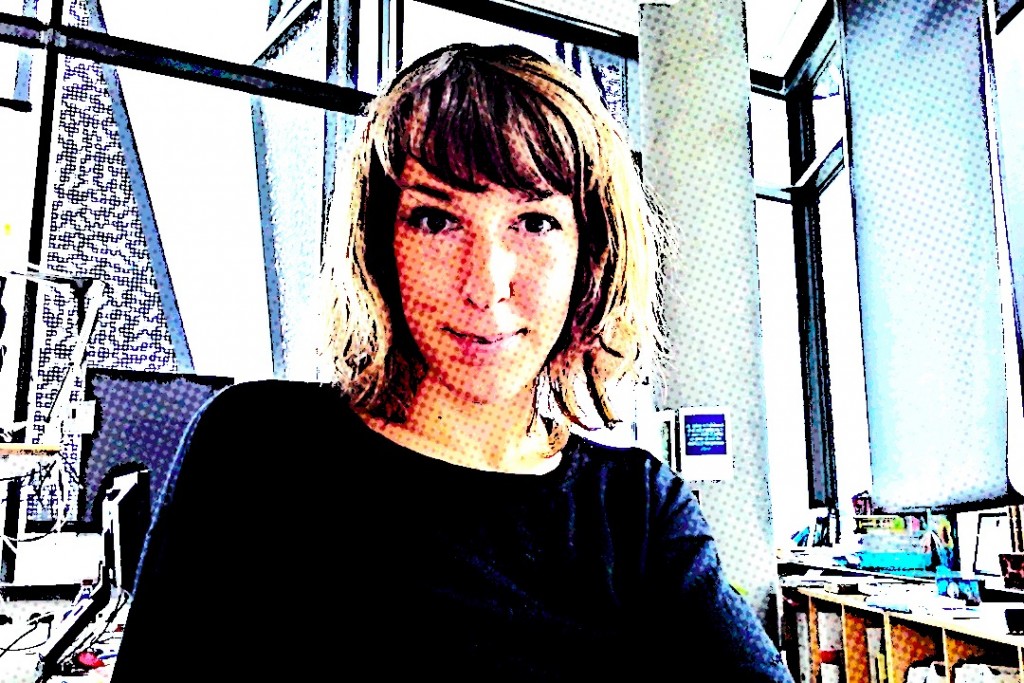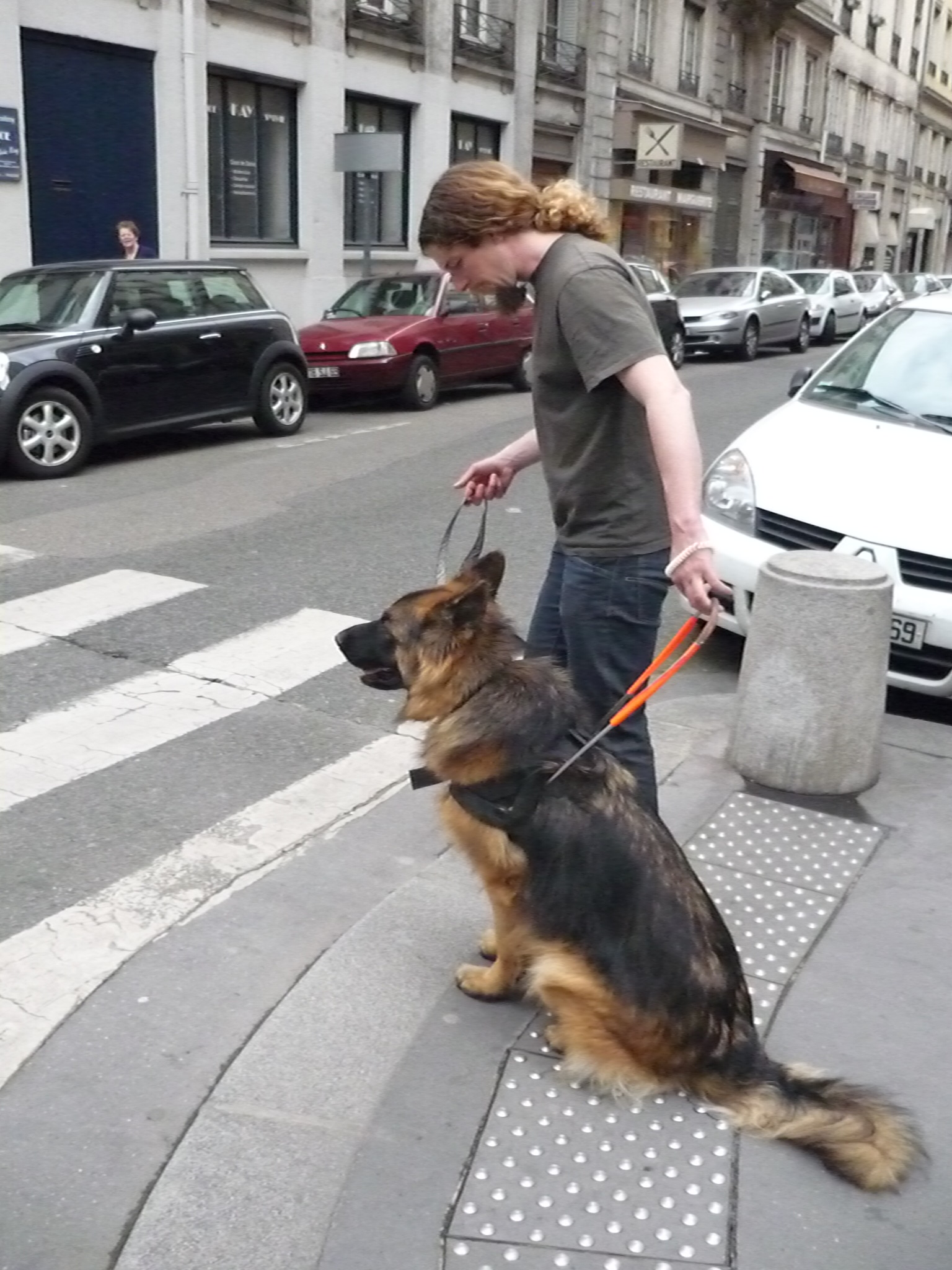 Researcher
Researcher
Department for Design and Communication
chloe[@]sdu.dk
(2016 – present)
THE “SOCIAL”-ITY OF INTERACTION
“What makes an interaction a social interaction?” would be an appropriate synthesis of my main research questions. To examine it, and with a strong interest in multimodal analysis, I explore several topics:
- human/animal interaction
- epistemology of the life science (biology and ethology)
- the role of objects in everyday social interaction
- touching and tactility
I was trained in linguistics and my first interest was in verbal interaction and in the social dimension of language (sociolinguistics; interactional linguistics). I started by working on the role of linguistic resources used by social workers during their night roams for homeless people in Paris. Then considering the importance of gesture, gaze, body position in human interaction, I became more and more interested in multimodal analysis.
That’s maybe why the next step to my study of social interaction was dedicated to something that involved even less verbal elements: human/animal communication.
I was trained and supervised by Prof. Lorenza Mondada, and get my PhD from the Ecole Normale Superieure de Lyon, at ICAR Lab, in 2013.
HUMAN/ANIMAL INTERACTION AND COMMUNICATION
I dedicated my PhD to the description of communicational resources used by blind-persons, guide dogs, and educators, to understand each other and perform remarkable interspecific activities. The approach adopted was largely EMCA inspired – and the idea was to question the forms of sociality at work in these multi-species, and complex, interactions.
I found out that we can observe in dog/human interaction ‘conversational’ and interactional formats that were previously documented in human interaction (see for instance the role played by gaze exchange). If these kind of similarities are to be seen, then social sciences and linguistics, in their attempt to describe the systematics of social organization, are as relevant as other fields to deal with human/animal interaction – and it should therefore not be the exclusive domain of ethology.
Associated publications
A monography on this subject will be published in 2017 (in French): Interactions et socialité interspécifiques : une analyse des ressources multimodales dans la communication hommes/chiens, at Lambert-Lucas Editions.
Extension de la question de “l’ordre social” aux interactions hommes/animaux – une approche ethnométhodologique, in L’Année Sociologique, vol. 66, n°2.
I am also preparing, in collaboration with Dominique Guillo, an article on the impact of taking into account human/animal interactions on the conceptualization of the notion of “social order”.
EPISTEMOLOGY OF THE LIFE SCIENCES
Aside from my interest in the description of human/animal interaction, and in the continuity of it, I am also interested in the way disciplines of the life sciences deal with the question of sociality and investigate the social dimension of behaviors.
I examine the way sociality is treated as a taken-for-granted and often undetermined notion, that stands for both “living in groups” and “having complex cognitive competences”.
The overall issue is to question the theoretical and methodological compatibility [or not!] of some branches of the life sciences with the general epistemology of interactionism and pragmatism (the consequences of the idea of evolutive continuity for instance).
Associated publications
Several articles are in preparation on this topics, among which “From Pavlov to clicker training: back on the modalities of ‘behaviostic operationalism’“, and “Les ethologues sont-ils encore naturalistes ? Une approche épistémologique des sciences du comportement animal” (Are ethologists still naturalists? An epistemological approach to animal behavior)
THE ROLE OF OBJECTS IN SOCIAL INTERACTION
 As part of the SOIL project, I am exploring the role objects play in everyday social interaction, and especially in interspecific interaction. In several data sets (ordinary domestic interactions, training situation, assistance dogs, etc.) I analyze and document the joint focused orientation to the material environment human and animal can share. Ordinary objects in the immediate surrounding like e.g. the leash, the bowl of food, the toy, etc. are resources that create and support mutual comprehension and action. Here again, we find patterns that are closely related to those found in an (only)human interaction.
As part of the SOIL project, I am exploring the role objects play in everyday social interaction, and especially in interspecific interaction. In several data sets (ordinary domestic interactions, training situation, assistance dogs, etc.) I analyze and document the joint focused orientation to the material environment human and animal can share. Ordinary objects in the immediate surrounding like e.g. the leash, the bowl of food, the toy, etc. are resources that create and support mutual comprehension and action. Here again, we find patterns that are closely related to those found in an (only)human interaction.
Associated publications
On this topic, we wrote an article together with Yaël Kreplak in the book Interacting with objects, Language, Materiality and Social Activity (Nevile, Haddington, Heinemann & Rauniomaa, 2014), entitled “Artworks as touchable objects: guiding perception in a museum tour for blind people”.
TOUCH AND TACTILITY IN INTERACTION
[This project is in progress – more will be added soon]
PUBLICATIONS
2017
- L’anticipation comme actualisation. Liens entre temporalité et ordre moral dans les situations d’apprentissage, in Temporalités (submitted)
- Ouvrir l’interaction et créer du lien, in Binet J-M. (ed.), L’intervention sociale et ses cadres conversationnels: contributions ethnométhodologiques. Paris: Les Presses de Parmentier.(submitted)
- Interactions et socialité interspécifiques : une analyse des ressources multimodales dans la communication hommes/chiens. – Mondémé C., (2017). Limoges : Lambert-Lucas.
2016
- Extension de la question de “l’ordre social” aux interactions hommes/animaux – une approche ethnométhodologique – Mondémé C., L’Année Sociologique. vol 66, n°2
- Socialité et co-opération dans l’oeuvre de Charles Goodwin, ou comment penser les passerelles entre linguistique, anthropologie et sociologie – Mondémé C., Revue Tracés.
- Une sociologie avec les animaux : faut-il changer de sociologie pour étudier les relations humains/animaux ? – Doré A., Michalon J., Mondémé C., Avec Michalon J. et Doré A., Revue SociologieS. https://sociologies.revues.org/5329
2015
- Apports d’une approche écologique des interactions humain-chien – Guillo D., Lechevrel N., Mondémé C., in Servais V. (ed). La science [humaine] des chiens. Éditions Le Bord de l’Eau.
2014
- ‘Y’a un obstacle’ : Partage perceptif et construction des savoirs pratiques – Mondémé C., in Mondada L. (Ed.). Corps en Interaction : Participation, Spatialité, Mobilité. Lyon : Ens Editions, pp. 191-225.
- Artworks as touchable objects: guiding perception in a museum tour for blind people – Kreplak Y., Mondémé C., in Nevile M., Haddington P., Heinemann T., Rauniomaa M. (Eds.), Interacting with objects: Language, materiality, and social activity. New York: John Benjamins, pp. 295-317.
2011
- Animal as subject matter for social sciences: when linguistics addresses the issue of dog’s “speakership” – Mondémé C., in Gibas P. et al. (Eds.) Non-humans in Social Science: Animals, Spaces, Things. Cerveny Kostelec: Pavel Mervart, pp. 87-104.
- La moralité en actes : le code du maraudeur – Cefai D., Gardella E. Mondémé C., in Céfaï D., Gardella E. L’Urgence sociale en Action : Ethnographie du Samusocial de Paris. Paris : La Découverte, pp. 271-346.
2010
- La vie verbale au travail – Mondémé C., Compte rendu de : Josiane Boutet, 2008, Octarès. In Sociologie du travail, vol 52 (3), pp. 433-435.
2009
- Language au travail et langage comme travail : le cas des maraudeurs du Samu social – Mondémé C., Actes éducatifs et de soins, entre éthique et gouvernance, Actes du colloque international (Felix C., Tardif J., éd.), Nice 4-5 juin 2009. http://revel.unice.fr/symposia/actedusoin/index.html?id=399
2006
- Les funambules du tact. Cadre analyse du travail d’aide des sans-abri dans la rue – Gardella E., Lemener E., Mondémé C., Rapport de recherche pour l’Observatoire du Samusocial de Paris.
2005
- ‘Cockney’ et ‘Dirty’ in Baudino I., Gautheron M. (dir.). Gilbert & George E1. ENS Edition & Musée d’art Moderne de Saint-Etienne Métropole, pp. 94-97.